
1865 to 1967[edit]
Fredrik Idestam, co-founder of Nokia.
Leo Mechelin, co-founder of Nokia.
Eduard Polòn portrait by Eero Järnefelt.
The predecessors of the modern Nokia were the Nokia Company (Nokia Ab),Finnish Rubber Works Ltd (Suomen Gummitehdas Oy) and Finnish Cable Works Ltd (Suomen Kaapelitehdas Oy).[1] The company's name came from the Nokiatown and the Nokianvirta river.[2]
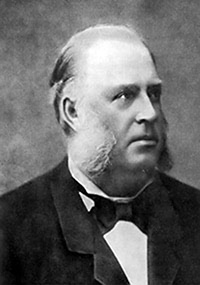 Nokia Company's history started in 1865 when mining engineer Fredrik Idestamestablished a ground wood pulp mill on the banks of the Tammerkoski rapids in the town of Tampere, in southwestern Finland (then, part of the Russian Empire).[3] In 1868, Idestam built a second mill near the town of Nokia, fifteen kilometers (nine miles) west of Tampere, by the Nokianvirta river, which had better hydropower resources.[4] In 1871, Idestam, with the help of close friend and statesman Leo Mechelin, renamed and transformed his firm into a share company, thereby founding Nokia Ab.[4]
Nokia Company's history started in 1865 when mining engineer Fredrik Idestamestablished a ground wood pulp mill on the banks of the Tammerkoski rapids in the town of Tampere, in southwestern Finland (then, part of the Russian Empire).[3] In 1868, Idestam built a second mill near the town of Nokia, fifteen kilometers (nine miles) west of Tampere, by the Nokianvirta river, which had better hydropower resources.[4] In 1871, Idestam, with the help of close friend and statesman Leo Mechelin, renamed and transformed his firm into a share company, thereby founding Nokia Ab.[4]
Eduard Polón (1861–1930), was a Finnish business leader.[5] In 1898, Polón founded Finnish Rubber Works (Suomen Gummitehdas Oy), manufacturer ofgaloshes and other rubber products, which later became Nokia's rubber business.[1]At the beginning of the 20th century, Finnish Rubber Works established its factories near the town of Nokia and began using its name as its product brand.[6]
Towards the end of the 19th century, Mechelin sought to expand into the electricity business, but his aspiration was initially thwarted by Idestam's opposition. However, Idestam's retirement in 1896 allowed Mechelin to become the company's chairman (from 1898 until 1914), and he subsequently convinced shareholders.[4] In 1902, Nokia added electricity generation to its business activities.[3]
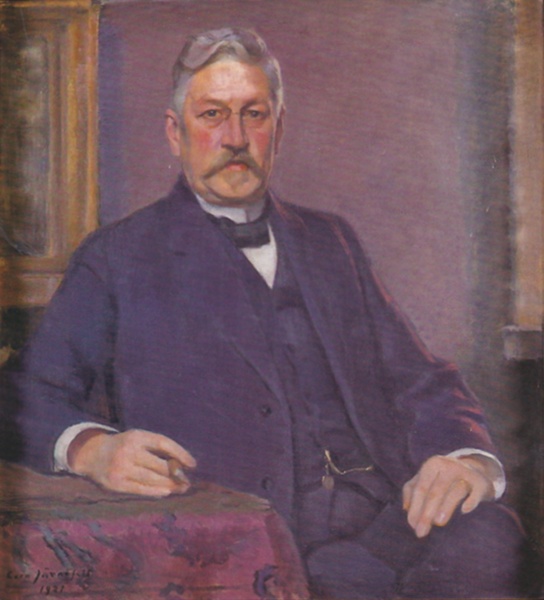
In 1912, Arvid Wickström founded Finnish Cable Works (Suomen Kaapelitehdas Oy), producer of telephone, telegraph and electrical cables and the foundation of Nokia's cable and electronics businesses.[1] At the end of the 1910s, shortly after World War I, the Company was nearing bankruptcy.[7] To ensure the continuation of electricity supply from Nokia'sgenerators, Finnish Rubber Works acquired the business of the insolvent company.[7] In 1922, Finnish Rubber Works acquired Finnish Cable Works.[8] In 1937, Verner Weckman, a wrestler and Finland's first Olympic Gold medalist, became president of Finnish Cable Works, after 16 years as its technical director.[9] After World War II, Finnish Cable Works supplied cables to the Soviet Union as part of war reparations. This gave the company a foothold for later trade.[9]
Although these three companies—Nokia Ab, Suomen Gummitehdas, Suomen Kaapelitehdas—were not formally merged, as the law did not allow it at the time, Polón continued to create a successful conglomerate that later became Nokia PLC. Polòn was the chairman, managing director, and the largest owner of the group for 30 years.[citation needed]
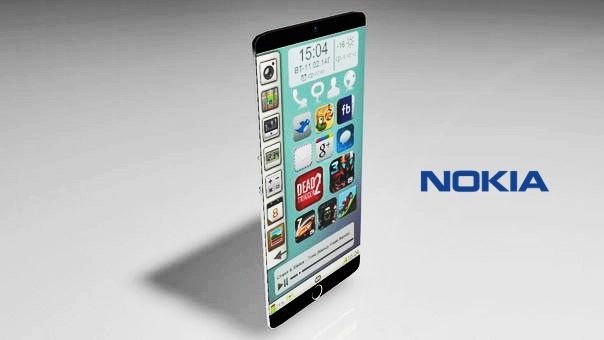
A capacitor made by Nokia Capacitors
The three companies, jointly owned since 1922, were merged to form a new industrial conglomerate, Nokia Corporation, in 1967.[10] The new company was involved in many industries, producing at various times paper products, car and bicycle tires, footwear (including rubber boots), communications cables, televisions and other consumer electronics, personal computers, electricity generation machinery, robotics,[11] capacitors, Military technology and equipment (such as the SANLA M/90 device and the M61 gas mask for the Finnish Army), plastics, aluminum and chemicals.[12] Each business unit had its own director who reported to the first Nokia Corporation President, Björn Westerlund. As the president of the Finnish Cable Works, he had been responsible for setting up the company's first electronics department in 1960, sowing the seeds of Nokia's future in telecommunications.[13]
1967 to 2000[edit]
The electronics section of the cable division was founded in 1960 and the production of its first electronic devices began in 1962: a pulse analyzer designed for use in nuclear power plants.[13] In the 1967 fusion, that section was separated into its own division, and began manufacturing telecommunications equipment. A key CEO and subsequent chairman of the board was vuorineuvos Björn "Nalle" Westerlund (1912–2009), who founded the electronics department and let it run at a loss for 15 years. In the late 1960s and early 1970s Westerlund encouraged researchers to work on their own projects, which one top executive directly linked to the company's later expertise in mobile communications technologies.[14]
Network equipment[edit]
In the 1970s, Nokia became more involved in the telecommunications industry by developing the Nokia DX 200, a digital switch for telephone exchanges. The DX 200 became the workhorse of the network equipment division. Its architecture enabled it to be developed into various switching products.[15] In 1984, development of a version of the exchange for theNordic Mobile Telephony network was started.[16]
For a while in the 1970s, Nokia's network equipment production was separated into Telefenno, a company jointly owned by the parent corporation and by a company owned by the Finnish state. In 1987, the state sold its shares to Nokia and in 1992 the name was changed to Nokia Telecommunications.[17]
In 1998, Check Point established a partnership with Nokia, bundling Check Point's Software with Nokia's computer Network Security Appliances.[18]
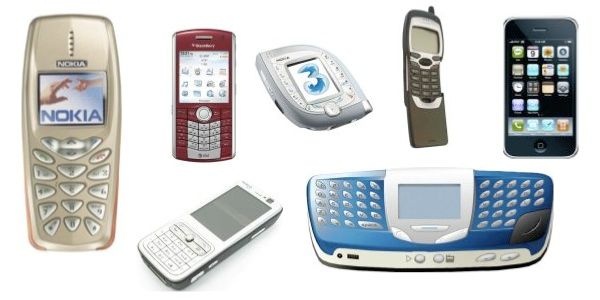
Pre-cellular systems[edit]
The technologies that preceded modern cellular mobile telephony systems were the various pre-cellular mobile radio telephony standards. Nokia had been producing commercial and some military mobile radio communications technology since the 1960s, although this part of the company was sold some time before the later company rationalization. Since 1964, Nokia had developed VHF radio simultaneously with Salora Oy. In 1966, Nokia and Salora started developing the ARPstandard (which stands for Autoradiopuhelin, or car radio phone in English), a car-based mobile radio telephony system and the first commercially operated public mobile phone network in Finland. It went online in 1971 and offered 100% coverage in 1978.[19]
In the 1970s and 1980s, Nokia developed the Sanomalaitejärjestelmä ("Message device system"), a digital, portable and encrypted text-based communications device for the Finnish Defence Forces.[20] The current main unit used by the Defence Forces is the Sanomalaite M/90 (SANLA M/90).[21]
Involvement in NMT (1G)[edit]
The Mobira Cityman 150, Nokia's NMT-900 mobile phone from 1989 (left), compared to the Nokia 1100 , a GSM phone from 2003.[22][23]
In 1979, the merger of Nokia and Salora resulted in the establishment of Mobira Oy. Mobira began developing mobile phones for the NMT (Nordic Mobile Telephony) network standard, the 1G, Finland's, as wells as world's first fully automatic cellular phone system that went online in 1981.[24] In 1982, Mobira introduced its first car phone, the Mobira Senator for NMT-450 networks.[24]
Nokia bought Salora Oy in 1984 and changed the company's telecommunications branch name to Nokia-Mobira Oy. The Mobira Talkman, launched in 1984, was one of the world's first transportable phones. In 1987, Nokia introduced its first mobile phone, the Mobira Cityman 900 for NMT-900 networks (which, compared to NMT-450, offered a better signal, yet a shorter roam). While the Mobira Senator of 1982 had weighed 9.8 kg (22 lb) and the Talkman just under 5 kg (11 lb), the Mobira Cityman weighed only 800 g (28 oz) with the battery and had a price tag of 24,000 Finnish marks (approximately 7,200 in 2014 euros [25]).[23] Despite the high price, the first phones were almost snatched from the sales assistants' hands. Initially, the mobile phone was a "yuppie" product and a status symbol.[12]
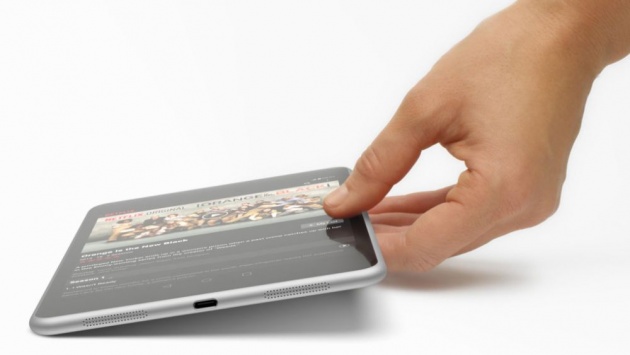
Nokia's mobile phones got a publicity boost in 1987, when Soviet leader Mikhail Gorbachevwas pictured using a Mobira Cityman to call from Helsinki to his communications minister in Moscow. This led to the phone's nickname of the "Gorba".[23]
In 1988, Jorma Nieminen, resigning from the post of CEO of the mobile phone unit, along with two other employees from the unit, started a notable mobile phone company of their own, Benefon Oy (since renamed to GeoSentric).[26]
One year later, Nokia-Mobira Oy became Nokia Mobile Phones.
Involvement in GSM (2G)[edit]
Nokia was a key developer of GSM (2G) (Global System for Mobile Communications),[27] the second-generation mobile technology that could carry data as well as voice traffic. NMT (Nordic Mobile Telephony), the world's first mobile telephony standard to allow international roaming, provided expertise for Nokia in developing GSM, which was adopted in 1987 as the new European standard for digital mobile technology.[28][29]
Nokia delivered its first GSM network to Finnish operator Radiolinja in 1989.[30] The world's first commercial GSM call was made on July 1, 1991 in Helsinki, over a Nokia-supplied network, by then-Prime Minister of Finland Harri Holkeri, using a prototype Nokia GSM phone.[30] In 1992, the first GSM phone, the Nokia 1011, was launched.[30][31] The model number refers to its launch date, 10 November.[31] The Nokia 1011 did not yet employ Nokia's characteristic ringtone, the Nokia tune, which was introduced as a ringtone in 1994 with the Nokia 2100 series.[32]
GSM's high-quality voice calls, easy international roaming and support for new services like text messaging (Short Message Service) laid the foundations for a worldwide boom in mobile phone use.[30] GSM came to dominate mobile telephony in the 1990s, by mid-2008 accounting for about three billion subscribers, with more than 700 mobile operators across 218 countries and territories. Connections were growing at the rate of 15 per second, or 1.3 million per day.[33]
Personal computers[edit]
The Nokia Booklet 3G mini laptop.
In the 1980s, Nokia's computer division Nokia Data produced a series of personal computers called MikroMikko.[34] MikroMikko was Nokia Data's attempt to enter the business computer market. The first model in the line, MikroMikko 1, was released on September 29, 1981,[35] around the same time as the first IBM PC.
However, the personal computer division was sold to the British ICL (International Computers Limited) in 1991, which later became part of Fujitsu.[36] MikroMikko remained a trademark of ICL and later Fujitsu. Internationally the MikroMikko line was marketed by Fujitsu as the ErgoPro. Fujitsu later transferred its personal computer operations to Fujitsu Siemens Computers, which shut down its only factory in Espoo, Finland (in the Kilo district, where computers had been produced since the 1960s) at the end of March 2000,[37]thus ending large-scale PC manufacturing in the country.
Nokia produced high quality CRT and early TFT LCD displays for PC and larger systems applications. The Nokia Display Products' branded business was sold to ViewSonic in 2000.[38]
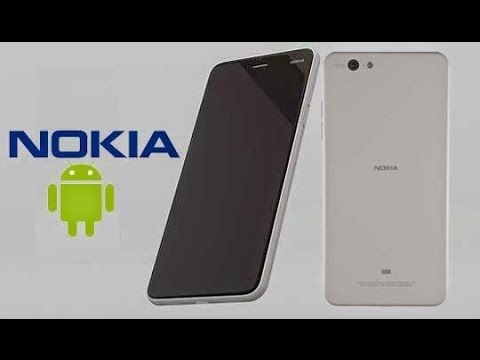
Nokia re-entered the PC market (for a short time) in August 2009 with the introduction of the Nokia Booklet 3G mini laptop.[39]
In addition to personal computers and displays, Nokia used to manufacture DSL modems and digital set-top boxes.
Challenges of growth[edit]
In the 1980s under CEO Kari Kairamo, Nokia expanded into new fields, mostly by acquisitions. In the late 1980s and early 1990s, the corporation ran into serious financial problems, partly due to heavy losses in its television manufacturing division.[40] Kairamo committed suicide in 1988. After Kairamo's death, Simo Vuorilehto became Nokia's chairman and CEO. In 1990–1993, Finland underwent a severe recession,[41] which also struck Nokia. Under Vuorilehto's management, Nokia was severely overhauled. The company responded by streamlining its telecommunications divisions and by divesting itself of the television and PC divisions.[42]
Probably the most important strategic change in Nokia's history was made in 1992, however, when the new CEO Jorma Ollilamade a crucial strategic decision to concentrate solely on telecommunications.[43] As late as 1991, more than a quarter of Nokia's turnover came from sales in Finland. However, after the strategic change of 1992, Nokia sales to North America, South America and Asia became significant.[44] The worldwide popularity of mobile telephones, beyond even Nokia's most optimistic predictions, created a logistical crisis in the mid-1990s,[45] prompting Nokia to overhaul its entire supply chain.[46]By 1998, Nokia's focus on telecommunications and its early investment in GSM technologies had made the company the world's largest mobile phone manufacturer, a position it held until 2012. Between 1996 and 2001, Nokia's turnover increased almost fivefold from 6.5 billion euros to 31 billion euros.[44] Logistics continued to be a major advantages over rivals, along with greater economies of scale.[47]
The company decided to exit consumer electronics in the 1990s and focused solely on the fastest growing segments intelecommunications.[43] Nokian Tyres, manufacturer of tires, split from Nokia Corporation in 1988[48] and two years laterNokian Footwear, manufacturer of rubber boots, was founded.[6] In 1989, Nokia also sold the original paper business; currently this company (Nokian Paperi) is owned by SCA. During the rest of the 1990s, Nokia divested itself of all other businesses.[43]
2000 to 2010[edit]
Product releases[edit]
Reduction in size of Nokia mobile phones. Left to right: Nokia 638 (1996; 19.06 cm height), Nokia 2160 EFR (1996; 16.42 cm), Nokia 5160 (1998; 14.84 cm), Nokia 6070 (2006; 10.5 cm)
Nokia launched the Nokia 3310 in 2000. It has become one of the most popular devices of all time. The Nokia 1100 handset launched in 2003,[22] shipped over 200 million units, is the best-selling mobile phone of all time and the world's top-sellingconsumer electronics product, and contributed to the company's rise in developing markets.[49] Nokia was one of the first to recognize the market opportunity in combining a game console and a mobile phone (both of which many gamers were carrying in 2003) into the N-Gage. The N-Gage was a mobile phone and game console meant to lure gamers away from the Game Boy Advance, though it cost twice as much.[50]
Nokia Productions was the first mobile movie-making project which was directed bySpike Lee. Work began in April 2008, and the movie premiered in October 2008.[51]
In 2009, the company reentered the personal computing market, announcing a high-end Windows-based netbook called the Nokia Booklet 3G.[39] The company also entered the smartphone market.[52]
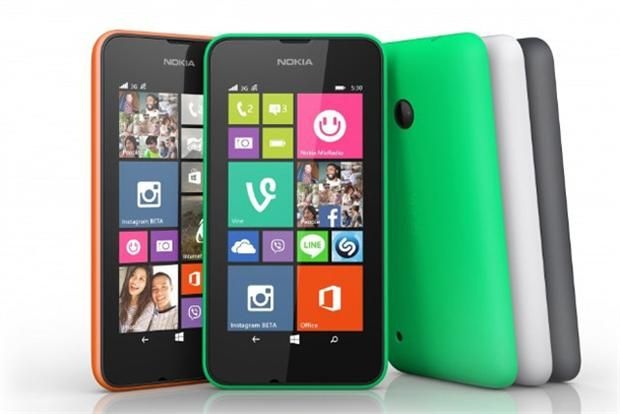
Series 40[edit]
Series 40 was a phone platform used in feature phones, mainly running Java-based applications.[53][not in citation given] It was once the world's most popular software of mobile phones.[citation needed]
Nokia acquired Smarterphone, a company making the Smarterphone OS for low end phones and merged it with Series 40 to form the Asha Platform, which also inherits some UI characteristics from Nokia's MeeGo platform.[citation needed] The Asha 501was the first phone running the new OS.[54]
Series 40 was discontinued in late 2014.
Symbian OS[edit]
Symbian was Nokia's main smartphone operating system until 2011. Symbian was popular among the smartphone market during the 2000s.
Some popular Symbian-powered devices include the Nokia 7650, the first S60 smartphone; Nokia N-Gage the first game-centric smartphone; Nokia 6600, the first Symbian smartphone to sold over a million unit with a soap-like design; Nokia 7610, the first Nokia with a megapixel camera; Nokia 6630 the first 3G Nokia smartphone; Nokia N90, the first camera-centric phone; Nokia N95, a popular slider; Nokia N82, with Xenon flash; Nokia E71, offering a full "qwerty" keyboard and premium build; Nokia 5800 XpressMusic the first full-touch smartphone; Nokia N97 with full-touchscreen and a side-sliding QWERTY keyboard; Nokia X6 the first capacitive touchscreen and the Nokia N8 with the newer Symbian^3 and 12 megapixel camera.
The 2012 Nokia 808 PureView had a record 41-megapixel camera, and represented the end of the Symbian platform after its replacement by Windows Phone.[55]
Nokia 6600 from 2003 with a VGA camera,Bluetooth and expandable memory. It was the first Nokia and Symbian device to sell over a million. (Series 60 2nd)
Nokia N73 released in August 2006, with 3Gand a front camera. (S60 3rd)
The Nokia N95 released in March 2007, with a 5-megapixel camera and sliding multimedia keys. Often considered Nokia's hero smartphone. (S60 3rd)
Nokia E71 with aQWERTY keyboard, released in July 2008. (S60 3rd)
The Nokia 5800 XpressMusic, Nokia's first full-touchsmartphone. (S60 5th)
The Nokia N8 released in September 2010 is the first Symbian^3 device, and the first to feature a 12-megapixel autofocuslens. (Symbian^3/Anna/Belle)
The Nokia 808 PureView, released in February 2012 as the last Symbian smartphone, features a 41-megapixelcamera and a 1.3 GHz CPU. (Belle)
Linux devices[edit]
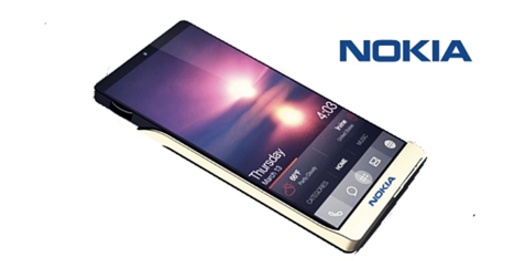
Nokia N9 running MeeGo Harmattan
Nokia's first Linux devices were the Nokia Internet tablets and the Nokia N900, which ranDebian-based Maemo.[56]
The Maemo project later merged with Intel's Moblin to create MeeGo.[57] The Nokia N9 was released before the project was abandoned in favour of Windows Phone.[58]
The Nokia X family of devices running Android was Nokia's final sally in Linux-based smartphones.[59]
Reorganizations[edit]
Nokia opened its Komárom, Hungary mobile phone factory on May 5, 2000.[60]
In April 2003, the troubles of the networks equipment division caused the corporation to resort to similar streamlining practices, including layoffs and organizational restructuring.[61]This diminished Nokia's public image in Finland[62][63] and produced a number of court casesand an episode of a documentary television show critical of Nokia.[64]
In June 2006, CEO Jorma Ollila left his position to become the chairman of Royal Dutch Shell[65] and to give way for Olli-Pekka Kallasvuo.[66]
In March 2007, Nokia signed a memorandum with Cluj County Council, Romania to open a plant near the city in Jucucommune.[67][68] Moving the production from the Bochum, Germany factory to a low wage country created an uproar in Germany.[69]
Nokia later moved its North American Headquarters to Sunnyvale, California.
In 2008, Nokia exited mobile phone distribution in Japan.[70]
In 2009, Check Point acquired Nokia's network security business unit.[71]
In February 2012, Nokia announced 4,000 lay-offs to move manufacturing from Europe and Mexico to Asia.[72] In March 2012, Nokia laid off 1,000 employees from its Salo, Finland factory to focus on software.[73] In June 2012, research facilities in Ulm, Germany and Burnaby, Canada closed, costing more jobs. The company also announced 10,000 lay-offs globally by the end of 2013.[74]
In January 2013, Nokia terminated 1,000 employees from its IT, production and logistics divisions. The company planned to transfer about 715 jobs to subcontractors.[75]
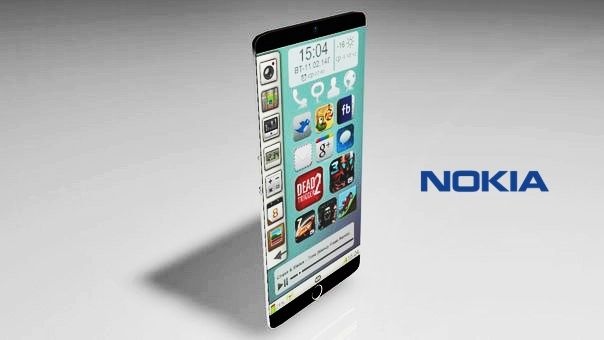
Acquisitions[edit]
For a more comprehensive list, see List of acquisitions by Nokia.
On September 22, 2003, Nokia acquired Sega.com, a branch of Sega to develop the Nokia N-Gage device.[76]
On November 16, 2005, Nokia agreed to acquire Intellisync Corporation, a provider of data and PIM synchronization software,[77] completing the acquisition on February 10, 2006.[78]
On June 19, 2006, Nokia and Siemens AG announced the companies would merge their mobile and fixed-line phone network equipment businesses, creating Nokia Siemens Networks.[79] Each company has a 50% stake in the infrastructure company, headquartered in Espoo, Finland. About 20,000 Nokia employees transferred to this new company. On August 8, 2006, Nokia agreed to acquire online music distributor Loudeye Corporation for approximately US $60 million.[80]
In July 2007, Nokia acquired the media sharing service Twango.[81] In September 2007, Nokia agreed to acquire Enpocket, a supplier of mobile advertising technology and services.[82] In 2007, Nokia agreed to acquire Navteq, a U.S.-based supplier of digital mapping data, for $8.1 billion[83][84] and finalized the acquisition on July 10, 2008.[85]
In September 2008, Nokia acquired OZ Communications, a privately held company with approximately 220 employees headquartered in Montreal, Canada.[86]
On July 24, 2009, Nokia agreed to acquire certain assets of Cellity, a privately owned mobile software company,[87]completed on August 5, 2009.[88] In September 2009, Nokia acquired certain assets of Plum Ventures, Inc to complement Nokia's Social Location services.[89]
In March 2010, Nokia acquired Novarra, a mobile web browser firm.[90] In April 2010, Nokia acquired MetaCarta, a local search technology firm.[91]
In 2012, Nokia acquired Smarterphone, a developer of an operating system for feature phones, and the imaging companyScalado.[92][93]
Loss of smartphone market share[edit]
Apple's iPhone, originally launched in 2007, was initially still outsold by Nokia smartphones, most notably the Nokia N95 for some time.[94] Symbian had a dominating 62.5% market share as of Q4 2007 – ahead of Microsoft's Windows Mobile(11.9%) and RIM (10.9%).
However, with the launch of the iPhone 3G in 2008, Apple's year-on-year market share doubled by the end of that year and the market share of iPhone OS (now known as iOS) pulled ahead of Windows Mobile, although Nokia retained a 40.8% share by Q4 2008; nevertheless, it saw a decline of over 10% from Q4 2007, replaced by Apple's increasing share.[95] TheNokia N96, released in late 2008, proved to be much less successful, although the Nokia 5800 XpressMusic was considered to be the iPhone 3G's main rival in some quarters. The success of the business-oriented Nokia E71,[96] was not enough to halt the decline of Nokia's smartphone market share. On 24 June 2008, Nokia bought the Symbian operating system and the next year made it open source.[97]
In early 2009, Nokia released the Nokia N97, a touchscreen device with a landscape QWERTY slider keyboard that was focused on social networking. It was a commercial success despite its mixed reception. The N97's closest competitor was theiPhone 3GS. In 2009 several devices were launched, such as the Nokia E52, which gained positive reception.[98][99]However, Symbian's market share dropped from 52.4% in Q4 2008 to 46.1% a year later. RIM (subsequently Blackberry) increased its market share during the period from 16.6% to 19.9%, while Apple increased its share from 8.2% to 14.4%.Android grew to 3.9%.[100]
2010 to 2013[edit]
In 2010, pressure on Nokia increased dramatically as Android and iOS continued to make gains.[101] Other Symbian OEMs including Samsung Electronics and Sony Ericsson chose to make Android-based smartphones instead of Symbian,[102] and by mid-2010 Nokia was its only OEM outside Japan. Nokia developed Symbian^3 to replace S60, but it never became popular.[103] By Q4 2010, Symbian's market share dipped to 32%, surpassing Android's at 30%.[104] Despite losing share, the smartphone unit was profitable and smartphone unit sales increased every quarter during 2010.[105] An estimated 4 million units were sold in Q4 2010.[106]
In February 2010, Nokia and Intel announced MeeGo, a merger of their Linux-based Maemo and Moblin projects aiming to create a unified mobile operating system for a wide array of devices, including tablets and smartphones.[107][108] In particular, Nokia planned to use MeeGo as a successor to Symbian on its future smartphones, but despite of warm reception from all markets only Nokia N9 has been launched.[109]
In an employee memo that surfaced in February 2011, Elop infamously described Nokia as being on a "burning platform", blaming the "war of ecosystems" between iOS and Android as part of Nokia's overall struggle, and asserting that the company needed to make major changes to its operation.[110]
Partnership with Microsoft[edit]
In February 2011, Stephen Elop and Microsoft's CEO Steve Ballmer jointly announced a major business partnership between the two companies, which would see Nokia adopt Windows Phone as its primary platform on future smartphones, replacing both Symbian and MeeGo. The deal also included the use of Bing as the search engine on Nokia devices, and the integration of Nokia Maps into Microsoft's own mapping services.[109] Nokia announced that it would still release one devicerunning the MeeGo platform in 2011, but that it would devote fewer resources to future development of the platform, and that it would phase out Symbian entirely.[109] Aligning with Microsoft had been considered a possibility by analysts due to Elop's prior employment with the company.[110][111][112] Nokia unveiled its first Windows Phone 7-based devices, the mid-range Lumia 710 and high-end Lumia 800, on October 26, 2011 at its Nokia World conference.[113][114]
After this announcement, Nokia's share price fell about 14%, its biggest drop since July 2009.[115] Nokia's smartphone sales, which had previously increased, collapsed.[116] From the beginning of 2011 until 2013, Nokia fell from #1 to #10 in smartphone sales.[117] Amid falling sales, Nokia posted a loss of 368 million euros for Q2 2011, whereas in Q2 2010, it had realized a profit of 227 million euros. On September 2011, Nokia has announced it would cut another 3,500 jobs worldwide, including the closure of its Cluj factory in Romania.[118] As Nokia was the largest mobile phone and smartphone manufacturer worldwide at the time,[119] it was suggested the alliance would help Windows Phone.[112] Nokia was overtaken by Apple as the world's biggest smartphone maker by volume in June 2011.[120][121] In August 2011 Chris Weber, head of Nokia's subsidiary in the U.S., stated "The reality is if we are not successful with Windows Phone, it doesn't matter what we do (elsewhere)." He further added "North America is a priority for Nokia (...) because it is a key market for Microsoft.".[122]
Nokia reported "well above 1 million" sales for its Lumia line up to January 26, 2012,[123][124] 2 million sales for the first quarter of 2012,[125] and 4 million for the second quarter of 2012.[126] In this quarter, Nokia only sold 600,000 smartphones (Symbian and Windows Phone 7) in North America.[127] For comparison, Nokia sold more than 30 million Symbian devices world-wide in Q4 2010[128] and the Nokia N8 alone sold almost 4 million in its first quarter. In Q2 2012, 26 million iPhonesand 105 million Android phones shipped, compared to only 6.8 million devices with Symbian and 5.4 million with Windows Phone.[129]
While announcing an alliance with Groupon, Elop declared "The competition... is not with other device manufacturers, it's with Google."[130] In June 2012, Nokia chairman Risto Siilasmaa told journalists that Nokia had a contingency plan in the event that Windows Phone failed, but did not specify what it was.[131][132]
Market share of Symbian, Windows Mobile and Windows Phone 7 among US smartphone owners from Q1 2011 to Q2 2012 according to Nielsen Company.
On February 8, 2012, Nokia Corp. announced 4,000 layoffs at smartphone manufacturing plants in Europe by the end of 2012 to move assembly closer to component suppliers in Asia.[133] On 14 June 2012, Nokia announced 10,000 layoffs globally by the end of 2013[134]and shut production and research sites in Finland, Germany and Canada in line with continuing losses and the stock price falling to its lowest point since 1996.[135] On June 18, 2012, Moody's downgraded Nokia's bond rating to junk.[136] Nokia CEO admitted that the company's inability to foresee rapid changes in the mobile phone industry was one of the major reasons for the problems.[137] On 4 May 2012, a group of Nokia investors filed a class action against the company as a result of disappointing sales.[138] On August 22, 2012, it was reported that a group of Finnish Nokia investors were considering gathering signatures for the removal of Elop as CEO.[139]
In December 2012, Nokia announced that it would be selling its headquarters Nokia House for €170 million, and leasing it back in the long-term. This decision was taken to slash costs as the company was during a financial crisis of falling revenues.[140]
In total, Nokia laid off 24,500 employees by the end of 2013.[141]
In January 2013, Nokia reported 6.6 million smartphone sales for Q4 2012 consisting of 2.2 million Symbian and 4.4 million sales of Lumia devices (Windows Phone 7 and 8).[142] In North America, only 700,000 mobile phones have been sold including smartphones.
In May 2013, Nokia released the Asha platform for its low-end borderline smartphone devices. The Verge commented that this may be a recognition on the part of Nokia that they are unable to move Windows Phone into the bottom end of smartphone devices fast enough and may be "hedging their commitment" to the Windows Phone platform.[143]
In the same month, Nokia announced its partnership with the world's largest cellular operator China Mobile to offer Nokia's new Windows-based phone, the Lumia 920, as Lumia 920T, an exclusive Chinese variant. The partnership was a bid by Nokia to connect with China Mobile's 700 million-person customer base.[144]
Following the second quarter of 2013, Nokia made an operating loss of €115m (£98.8m), with revenues falling 24% to €5.7bn, despite sales figures for the Lumia exceeding those of BlackBerry's handsets during the same period. Over the nine-quarters prior to the second quarter of 2013, Nokia sustained €4.1 billion worth of operating losses. The company experienced particular problems in both China and the U.S.; in the former, Nokia's handset revenues were the lowest since 2002, while in the U.S., Francisco Jeronimo, analyst for research company IDC, stated: "Nokia continues to show no signs of recovery in the US market. High investments, high expectations, low results."[145]
In July 2013, Nokia announced that Lumia sales were 7.4 million for the second quarter of the year .[146]
Sale of mobile phone business to Microsoft[edit]
On September 2, 2013, Microsoft announced that it would acquire Nokia's mobile device business in a deal worth €3.79bn($4.25bn), along with another €1.65bn($1.85bn) to license Nokia's portfolio of patents for 10 years; a deal totaling at over €5.4bn($6.05bn). Steve Ballmer considered the purchase to be a "bold step into the future" for both companies, primarily as a result of its recent collaboration.[147][148][149][150] In an interview with Helsingin Sanomat, former Nokia executive Anssi Vanjoki commented that the Microsoft deal was "inevitable" due to the "failed strategy" of Stephen Elop.[151]
Its deal was closed on April 25, 2014 for "slightly more" than the originally stated €5.44($6.10) billion.[152] Nokia's mobile phone assets became a part of Microsoft Mobile, a new subsidiary of Microsoft based in Finland.[153][154] The deal was originally expected to be closed in March 2014, but was delayed by a tax dispute involving a factory in India—officials claimed that Nokia had not properly paid taxes on devices that were produced at the plant, but sold domestically (exports are exempt from taxes). Indian governments had required that Nokia place money in escrow before it was allowed to transfer control of the factory to Microsoft. As a result, the plant was not transferred to Microsoft, but produced products on behalf of the company.[155][156][157]
As part of the deal, Microsoft acquired the Asha, X and Lumia brands, but only had a limited license to the Nokia brand. Microsoft could only use the Nokia brand to promote Asha, X and Lumia products until December 2015, and feature phonesfor 10 years. Microsoft did not acquire any rights to the Nokia tune, which the company may only use as the default ringtone on Nokia-branded devices. Nokia itself was also subject to a non-compete clause forbidding it from manufacturing any Nokia-branded smartphones until December 2015.[158][159][160] Microsoft also took over Nokia's website and social media outlets following the closure of the deal; this arrangement was in place for a minimum of one year after the closure.[153] The company continued to use the Nokia name on smartphones through October 2014, when Microsoft announced that future smartphones would be branded with Microsoft's name and logo.[161]
A number of Nokia executives joined Microsoft as a result; Stephen Elop became the head of Microsoft's devices team (which include products such as Xbox and Surface lines); Risto Siilasmaa replaced Elop as interim CEO, before the appointment of Rajeev Suri. Post-acquisition, Nokia focuses on two core business units; its infrastructure division Nokia Networks, and developing and licensing division Nokia Technologies.[147][147][148][149][150]
In July 2014, Microsoft announced a significant layoff of workers, including 12,500 workers from the former mobile phone group at Nokia.[162] Microsoft also ended future development of Nokia's non-Windows Phone product lines, in favor of focusing only on Windows Phone and Series 30+ devices.[163][164]
2014 to present[edit]
In October 2014, Nokia and China Mobile signed a $970 million framework deal for delivery between 2014 and 2015.[165]
On November 17, 2014, Nokia technologies head Ramzi Haidamus disclosed that the company planned to re-enter the consumer electronics business by licensing in-house hardware designs and technologies to third-party manufacturers. Haidamus stated that the Nokia brand was "valuable" but "is diminishing in value, and that’s why it is important that we reverse that trend very quickly, imminently."[166] The next day, Nokia unveiled the N1, an Android tablet manufactured byFoxconn, as its first product following the Microsoft sale.[167] Haidamus emphasized that devices released under these licensing agreements would be held to high standards in production quality, and would "look and feel just like Nokia built it."[168]
Acquisition of Alcatel-Lucent, sale of Here[edit]
On April 14, 2015, Nokia confirmed that it was in talks with the French telecommunications equipment company Alcatel-Lucent regarding a potential merger.[169] The next day, Nokia officially announced that it had agreed to purchase Alcatel-Lucent for €15.6 billion in an all-stock deal.[170] The acquisition aims to create a stronger competitor to the rival firmsEricsson and Huawei, whom Nokia and Alcatel-Lucent had surpassed in terms of total combined revenue in 2014. The acquisition is expected to be completed in early 2016, and is subject to regulatory approval. At completion, Nokia shareholders will hold 66.5% while Alcatel-Lucent shareholders will hold 33.5% of the new combined company. The Bell Labs division will be maintained, but the Alcatel-Lucent brand will be replaced by Nokia.[170][171][172] As of October 2015, following approval of the deal by China's Ministry of Commerce, the merger awaits approval by French regulators.[173]Despite the initial intents of selling the submarine cable division separately, Alcatel-Lucent later declared that it would not sell this strategic business unit separately.[174] This will provide Nokia with a good hold over the global internet connection business after the completion of the acquisition. Supporting his move further, Nokia's CEO said that the acquisition will ensure greater scopes for Nokia to engage in upcoming 5G revolution.[175] In November 2015, Nokia announced it expects to complete its transaction to acquire a majority share in Alcatel-Lucent in early 2016.[176] The merger was made effective on January 14, 2016.[177]
On August 3, 2015, Nokia announced that it had reached a deal to sell its Here digital maps division to a consortium of three German automakers—BMW, Daimler AG and Volkswagen Group, for €2.8 billion.[178] The deal was made effective on Dec 7 2015.



